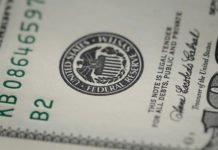Markets
The build-up to US President Trump’s “Liberation Day” is leaving very nasty scars on financial markets. Last Friday’s trading session was full risk-off with European stock markets losing around 1% and key US gauges dropping 1.7% to 2.7%. US indices are ready for/into a new fierce sell-off wave after falling out of the flag of a technical bearish flag formation and extending the sell-on-upticks pattern. Safe haven flows resulted in a correction higher in US Treasuries, but we doubt that they’ll be a long term beneficiary of current developments. US yields lost 8 bps to 11 bps in a daily perspective with the belly of the curve outperforming the wings. Treasuries outperformed German Bunds with daily German changes varying between -3.2 bps (30-yr) and -5.3 bps (5-yr). US eco data on Friday confirmed the stagflation risks with March inflation expectations in the Michigan consumer confidence survey showing upward revisions for bot the short term (1y) gauge (5% from 4.9%; highest since 2022) and long term (5-10y) measure (4.1% from 3.9%; highest since February 1993). In the meantime, the Atlanta Fed’s GDPNow estimate showed Q1 GDP shrinking by 2.8% Q/Qa vs the previous release’s estimate of -1.8% Q/Qa. Unlike US Treasuries, the US dollar failed to even briefly profit from the risk-off climate given the rising US recession risk premium. Fears of global de-dollarization become more and more of an issue as well. EUR/USD closed back above the 1.08 mark (1.0845). USD/JPY fell from 151.05 to 149.84.
Friday’s themes are at play this morning. Asian stock markets sink by up to 3-4% (Japan, Taiwan) with European and US futures pointing to steep losses. USD/JPY slides further below 149 with core bond futures gaining more traction. US President Trump said he’ll start his reciprocal tariffs with all countries (20% across the board?!) instead of a focus on the “dirty 15” which are responsible for the lion share of the US goods trade deficit as suggested earlier by Secretary of Treasury Bessent. Details on what specific sectors, calculations or (ways to get) exemptions are still unknown. Adding to the risk-off climate is an escalation in ceasefire talks between Russia and the US with Trump threatening secondary tariffs on buyers of Russian oil and more and more talk about plans to bypass the constitution prohibition on US presidents being elected three times. This week’s tariff narrative by far outweighs other eco figures like today’s EMU March CPI figures (expected to strengthen the case for a final April ECB rate cut) or key US eco data (ISM surveys, JOLTS job openings, ADP employment and payrolls).
News & Views
Both the Chinese manufacturing and non-manufacturing PMI rose gradually further above to 50 mark this month. The manufacturing index improved from 50.2 to 50.5, the best level in 12 months. The rise was supported by a further improvement in orders. However, employment remained in contraction territory (48.2). Price indicators suggest ongoing deflationary pressures (input prices 49.8, output prices 47.9). Medium and small enterprises showed an improvement in sentiment, which might be an indication of better domestic demand. Large enterprises turned more cautious. The non-manufacturing improved modestly as well, from 50.4 to 50.8. The rise suggests that (fiscal) stimulus is gradually supporting activity. A the same time, some of the improvement might be due to orders improving as demand has been frontloaded ahead of the implementation of US tariffs later this week.
Rating agency S&P on Friday affirmed the Czech Republic’s AA- credit rating with a stable outlook. According to S&P, the stable outlook reflects the view that Czechia’s strong government and external balance sheets, including sizeable international reserves at the central bank, should cushion the effects of a more muted economic performance in the face of a more subdued European economic outlook, unclear trajectory of global trade disputes, and structural challenges facing Czechia’s automotive manufacturing-centered economy. S&P assesses that economic recovery since the pandemic has been somewhat lackluster with GDP only exceeding 2019 levels by only 2.5%. 2025-2026 growth is seen as mainly being driven by domestic factors with average growth at about 2% still seen below potential growth of 2.5%. Still growth is expected to exceed the average of the EU. S&P also indicated that Czechia demonstrated the strongest fiscal consolidation within the CEE region with a government deficit below 3%. Net public debt also is expected to remain low at 31% of GDP, which the rating agency sees as proving room for spending on defense and nuclear power generation.













